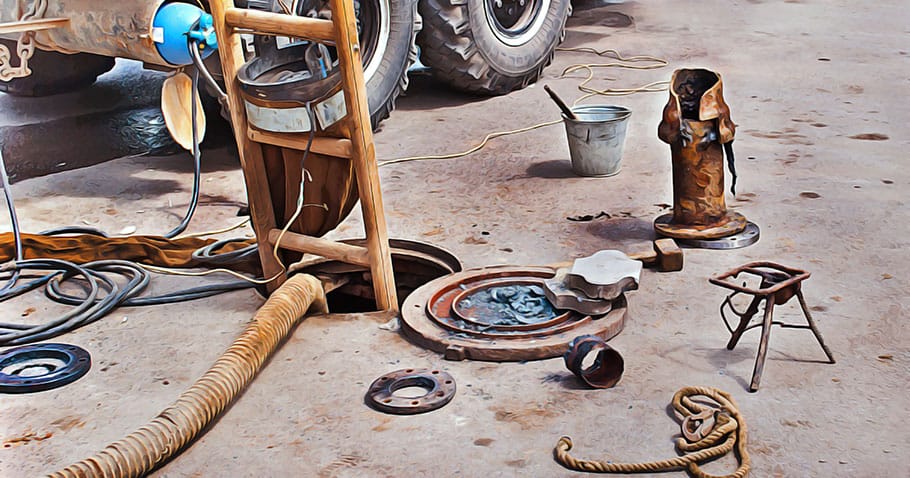The moment you notice a leak staining your ceiling or a damp smell drifting through your home, it’s easy to feel overwhelmed. That’s when water damage restoration becomes an immediate concern. If you ignore these early red flags, water can seep into structural elements, insulation, and hidden crevices, causing persistent harm over time. Moisture infiltration can weaken wooden beams, warp flooring, and disrupt the stability of your walls. In some cases, water damage arises from broken pipes or overflowing appliances, while in other situations, you may be dealing with natural disasters like floods or hurricanes. No matter the source, the damaging effects accumulate quickly. Once water seeps underneath surfaces, it creates an ideal environment for mold to grow. Acting swiftly to address any moisture concerns is key to preserving the integrity of your home. By focusing on both the visible and invisible consequences of water intrusion, you can reduce the risk of larger, more expensive repairs in the future.
Common Sources of Moisture Problems
Water issues are not always dramatic or obvious. Sometimes, a slow pipe drip behind a wall can lead to a surprising amount of flooding within the structure of your home. Other times, poor drainage around the foundation can result in subterranean water issues that erode your basement or crawl space. It’s unaware homeowners who often suffer the most, as these less-obvious sources of moisture can fester for weeks or even months before discovery. By then, the damage may have spread through insulation, drywall, and wood framing. Even a leaking roof, if left unattended, can secretly compromise the attic and upper levels of the building, allowing mold to take root. Paying close attention to your water bill and watching for fluctuations can offer a clue. In some cases, spikes in usage may signal a hidden leak. Being aware of the common origins of moisture damage helps you act promptly, minimizing long-term impact on your home.
Signs of Potential Mold Growth
A damp environment often fosters mold, which thrives in areas where moisture meets organic materials like wood or paper. This can lead to colonies forming on walls, furniture, and even within air ducts. You might notice discolored patches, sometimes green or black, that appear seemingly overnight. Water stains on ceilings or baseboards are another red flag, as they suggest prolonged dampness that can nurture fungal growth. A musty or stale odor is also a giveaway, particularly if it intensifies in enclosed spaces like closets or basements. If you detect such an odor, it might mean mold is trapped behind walls or under carpeting. Many homeowners suspect mold only when they see physical signs, but invisible spores can circulate long before visible patches appear. Recognizing these warning signals is your first step toward addressing the root cause and avoiding more serious structural and health implications down the line.
Crucial Steps of mold remediation
When mold spreads beyond a manageable level, professional help becomes essential. Experts in mold remediation Gaithersburg arrive equipped with specialized gear and the know-how to target fungus at its source. They begin by assessing the humidity levels and identifying the primary cause of moisture. Next comes the containment process: sealing off affected areas to prevent dangerous spores from migrating. Once the area is isolated, contaminated materials might be removed and safely discarded if they’re too damaged to salvage. The crew then uses cleaning agents designed to kill mold at a microscopic level. Air filtration systems help capture airborne spores, ensuring they don’t spread to other rooms. Every step is meticulous because any oversight can trigger a fresh outbreak. By enlisting professionals, you not only eliminate the current problem but also gain valuable advice on preventing future mold events through better ventilation, controlled humidity, and regular inspections.
Health Risks Associated with Mold
Mold can affect more than just the structure of your home; it also poses a threat to human well-being. People with respiratory conditions, such as asthma or allergies, may experience worsening symptoms in moldy environments. Some individuals complain of persistent coughing, sneezing, or skin irritations. In more severe cases, mold exposure can open the door to infection risks, particularly for those with weakened immune systems. It’s vulnerable populations, including infants and the elderly, who feel the greatest impact. Even perfectly healthy individuals can develop headaches, fatigue, or congestion over time. Chronic mold issues can evolve into severe health concerns if not addressed, underscoring the importance of thorough moisture control and immediate cleanup. Consulting medical professionals for persistent symptoms and working with qualified mold specialists is the best approach for safeguarding both health and property.
Professional Assessment and Techniques
Before significant cleanup or repairs begin, a thorough inspection of the affected space is recommended. Professionals use moisture meters and infrared cameras to pinpoint hidden damp spots, and they often rely on air sampling to detect mold spores in the environment. This thorough evaluation allows them to tailor a plan that suits your home’s specific needs. During the cleanup, specialized equipment like industrial-grade dehumidifiers and air scrubbers help eliminate excess moisture while capturing microscopic particles. These technicians often have training in construction practices, ensuring they understand how water travels through walls, floors, and ceilings. It’s also alternative techniques such as soda blasting or dry ice blasting that can remove mold without generating copious amounts of dust. By pairing expertise with advanced tools, these professionals help ensure a comprehensive cleanup that meets industry standards, offering you peace of mind and renewed confidence in the safety of your living space.
Long-Term Prevention Strategies
Achieving a successful cleanup is only half the battle; prevention stands as your best line of defense against recurring issues. Routine maintenance checks are vital, particularly after storms or freezing winters that can cause hidden plumbing damage. Keeping gutters clear and ensuring proper grading around the foundation can reduce the likelihood of water pooling near your home. Indoor ventilation also plays a major role in discouraging mold, as stale, humid air provides the perfect habitat for fungal spread. Running exhaust fans during showers or cooking helps remove moisture-laden air and keeps your home ongoing fresh. Some homeowners install humidity gauges in damp-prone areas to track moisture levels and take swift action if they rise above recommended thresholds. Simple steps, like addressing small leaks immediately and ensuring regular roof inspections, can be crucial for maintaining a safe, dry home where mold struggles to gain a foothold.
Conclusion
Ultimately, when moisture intrusion gets out of control, professional mold removal Silver Spring becomes the best course of action for safeguarding your property and well-being. By this stage, you’ve likely tackled the immediate water issue and taken steps to address the mold that followed. However, it’s also wise to consider resilience measures that fortify your home against future threats. Close collaboration with certified specialists, along with a methodical approach to repairs, will help stop mold from returning. Take time to appreciate how each step in the cleanup has safeguarded your living environment. Dry basements and fresh-smelling rooms are more than just cosmetic improvements—they’re signs that you’ve halted further deterioration and promoted healthier indoor air. In the end, tackling mold at its earliest signs, combined with thorough water management, is the most effective path to a durable, comfortable home.


